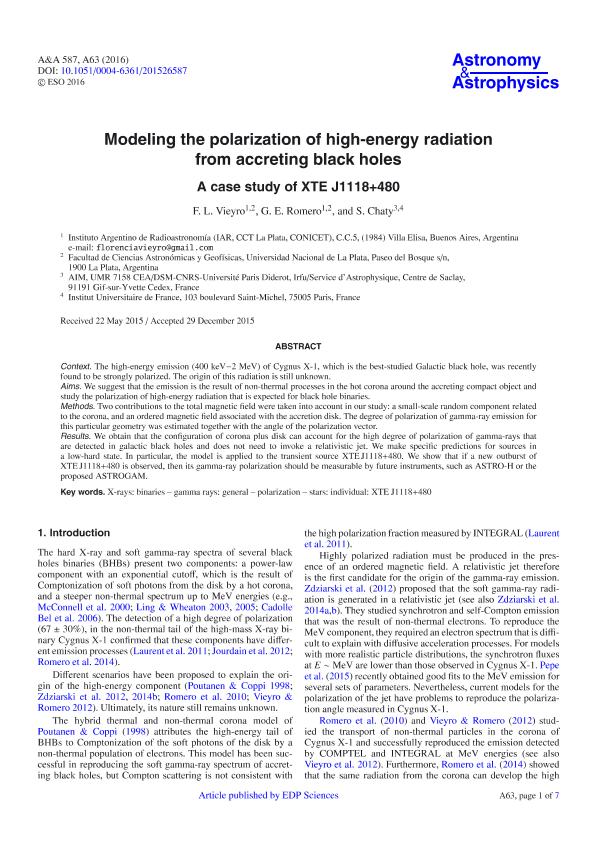Artículo
Modeling the polarization of high-energy radiation from accreting black holes: A case study of XTE J1118+480
Fecha de publicación:
03/2016
Editorial:
Edp Sciences
Revista:
Astronomy And Astrophysics
ISSN:
0004-6361
Idioma:
Inglés
Tipo de recurso:
Artículo publicado
Clasificación temática:
Resumen
Context. The high-energy emission (400 keV-2 MeV) of Cygnus X-1, which is the best-studied Galactic black hole, was recently found to be strongly polarized. The origin of this radiation is still unknown. Aims. We suggest that the emission is the result of non-thermal processes in the hot corona around the accreting compact object and study the polarization of high-energy radiation that is expected for black hole binaries. Methods. Two contributions to the total magnetic field were taken into account in our study: a small-scale random component related to the corona, and an ordered magnetic field associated with the accretion disk. The degree of polarization of gamma-ray emission for this particular geometry was estimated together with the angle of the polarization vector. Results. We obtain that the configuration of corona plus disk can account for the high degree of polarization of gamma-rays that are detected in galactic black holes and does not need to invoke a relativistic jet. We make specific predictions for sources in a low-hard state. In particular, the model is applied to the transient source XTE J1118+480. We show that if a new outburst of XTE J1118+480 is observed, then its gamma-ray polarization should be measurable by future instruments, such as ASTRO-H or the proposed ASTROGAM.
Archivos asociados
Licencia
Identificadores
Colecciones
Articulos(IAR)
Articulos de INST.ARG.DE RADIOASTRONOMIA (I)
Articulos de INST.ARG.DE RADIOASTRONOMIA (I)
Citación
Vieyro, Florencia Laura; Romero, Gustavo Esteban; Chaty, S.; Modeling the polarization of high-energy radiation from accreting black holes: A case study of XTE J1118+480; Edp Sciences; Astronomy And Astrophysics; 587; 3-2016; 1-7;63
Compartir




